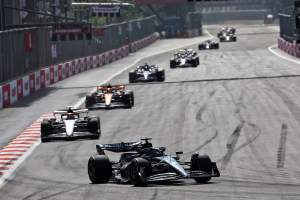The 2023 Formula 1 season is not proving to be a thriller – and that’s down to more than just the Red Bull domination.
Fans and drivers feel the level of overtaking has declined again this season, which is a bad sign in only year two of a rules revolution that was supposed to be all about closing up the field and improving the racing.
There are plenty of theories about the causes. Here’s what the drivers are saying, and what we make of their reasoning.
AERO DEVELOPMENT MEANS IT’S ALREADY TOO HARD TO FOLLOW AGAIN
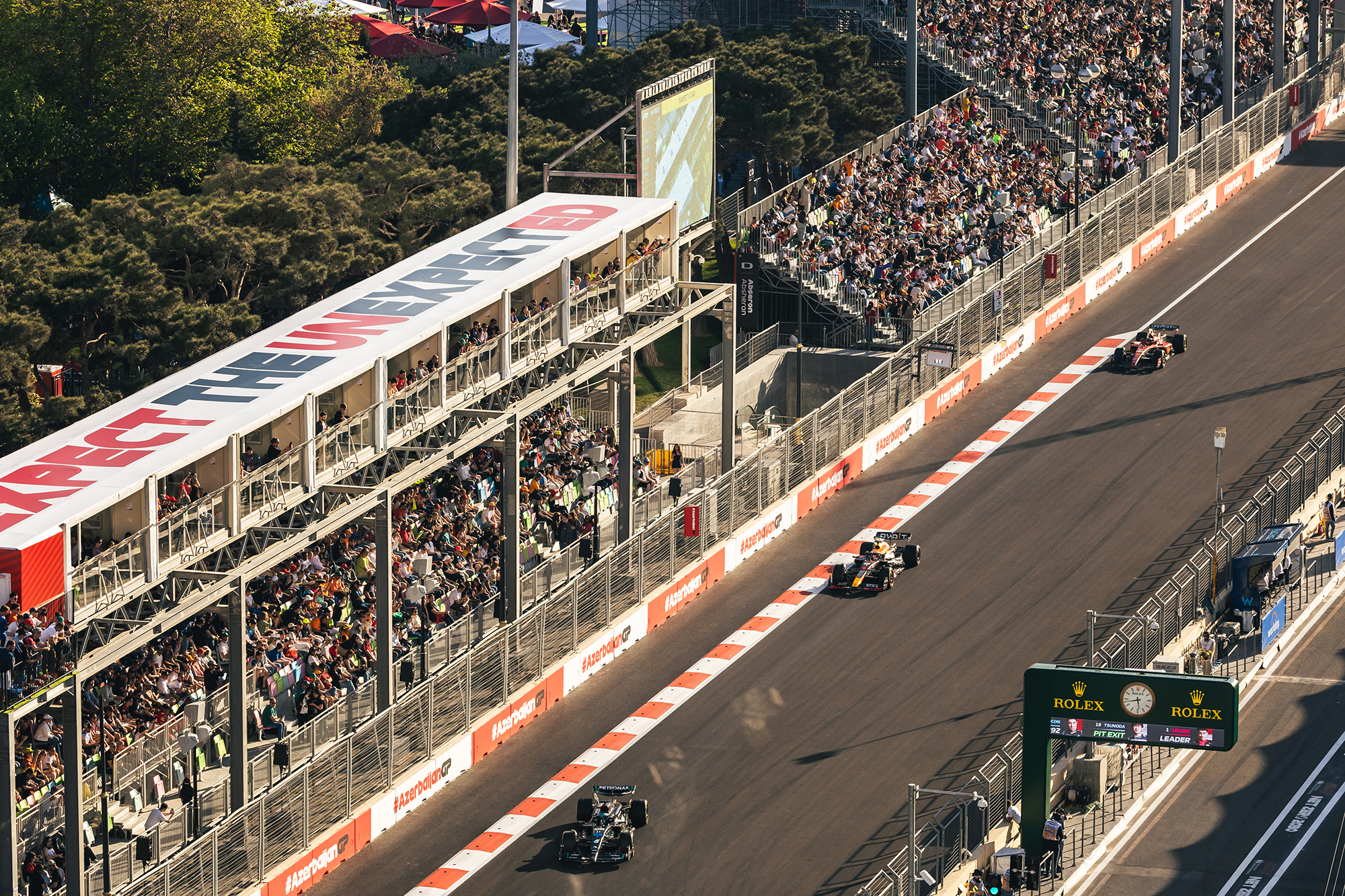
The theory: The primary aim of the regulations was to reduce the outwash effect that creates the ‘dirty air’ that is such an impediment to F1 cars following closely. But the aerodynamic tricks that create that outwash are good for performance – so it was inevitable that as teams worked to find ways around the rules’ attempts to limit them, dirty air would start to reappear.
Driver’s view – George Russell: “Obviously F1 created these regulations to help overtaking and following and since they were introduced, every single team has developed naturally away from their [the rules’] initial intention to develop the car.
“So every car is very different compared to what, let’s say, they were intended to look like two years ago.
“The overtake is slowly getting more difficult, also because the slipstream isn’t as large as well with these new cars. So it’s slowly going in the wrong direction for overtaking.”
The Race says: Given the combined might of the 10 F1 teams in terms of design and development is vastly bigger than that of the rulemakers, the FIA is outgunned on this.
There will always be the push and pull of regulations designed to increase the ‘raceability’ of the cars and designs counteracting that work regardless of whether you have ground effect cars, flat-bottom cars or some other concept entirely.
The laws of physics are immutable and, short of running F1 races in a vacuum there will always be some kind of dirty air effect. Likewise, any effect to manipulate the wake to reduce that runs the risk of reducing the slipstream effect.
Realistically, all the FIA can do for the next few years is make adjustments to contain the problem and prevent it getting worse.
But the focus must be on the next big opportunity in 2026, when adjustable aero will become more widespread.
TYRES ARE OVERHEATING
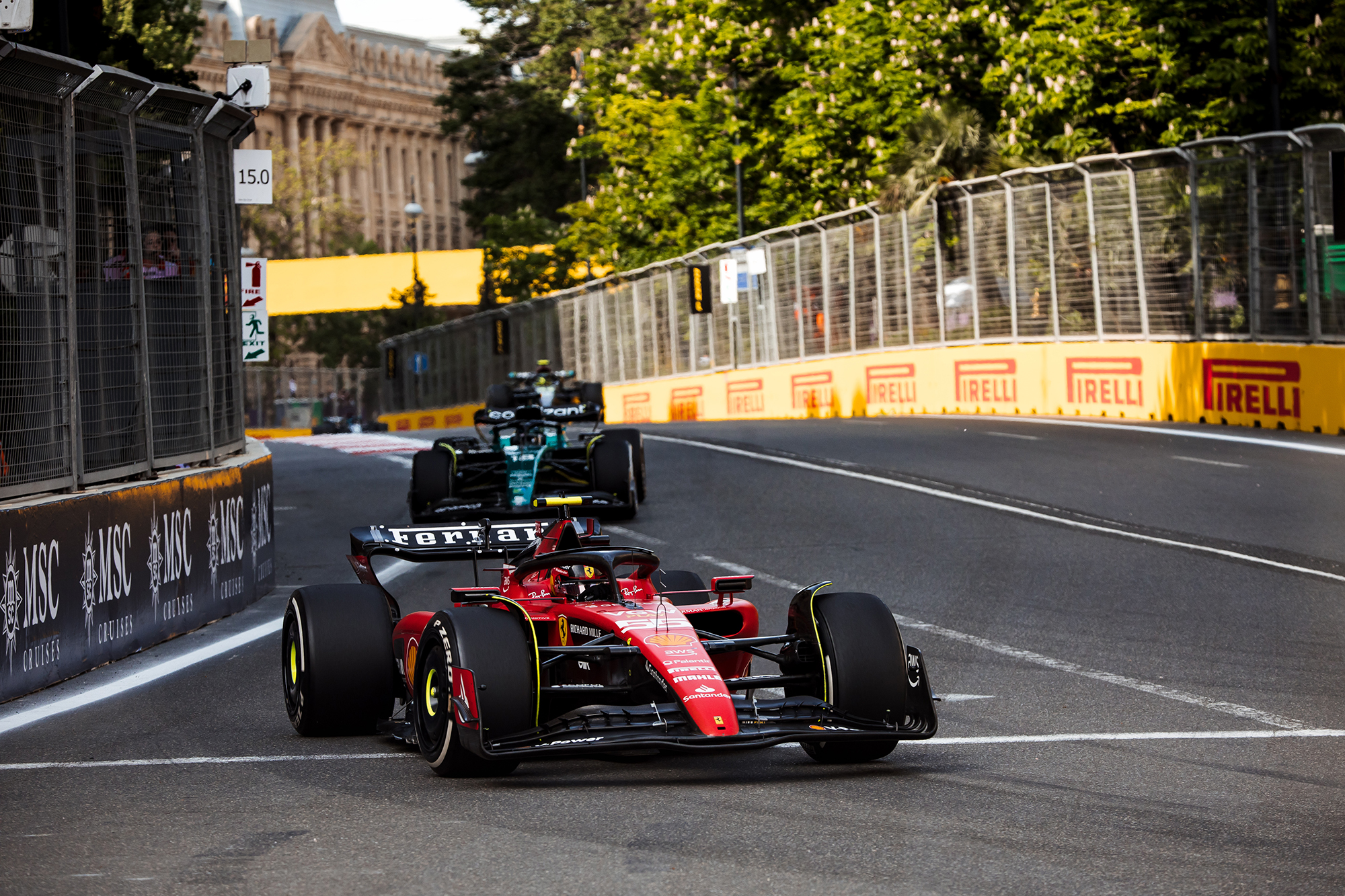
The theory: Drivers are reporting that the latest iteration of Pirelli’s F1 tyre is too prone to overheating when closely following another car, while also not degrading enough in normal circumstances to create performance variation.
Driver’s view – Carlos Sainz: “It’s surface overheating especially. It’s the thing that as soon as you are behind a car and you lose a bit of traction, a bit of braking grip, you start slipping the tyre and that extra slip means the next corner you have less grip, the next corner you have a bit less grip and you are only able to follow for one or two laps and then you have to back off.”
The Race says: It’s inevitable in any control-tyre formula that tyres will come in for criticism. Pirelli worked to reduce the surface overheating when it introduced its low-profile tyres to be mounted on the larger 18-inch wheelrims at the start of last year.
Some improvements were made, but particularly once cars start sliding around in turbulent air, some degree of overheating is unavoidable. There’s certainly room for improvement, although bearing in mind the weight of the cars there is a limit to what is possible.
Criticism of one-stop races is legitimate given Pirelli has been aiming ideally for two-stop races, preferably with a range of strategy options. The tyre degradation in Jeddah, Melbourne and Baku was low, which led to one-stop races.
But again, it’s working within the constraints of trying to cover the whole season with just six slick compounds (one the little-used C0 that was actually last year’s C1 but kept in reserve for high-load circuits such as Zandvoorts). Plus, tracks that have been resurfaced in recent times have a tendency to be gentle on tyres. Jeddah, Melbourne and Baku are all, to a greater or lesser extent, fresh surfaces – as is Miami, which was resurfaced for this year.
Drivers will always want more for the tyres and it’s fair to ask for more from Pirelli. But it’s also important not to expect the impossible.
RED BULL IS TOO FAST, EVERYONE ELSE IS TOO CLOSE
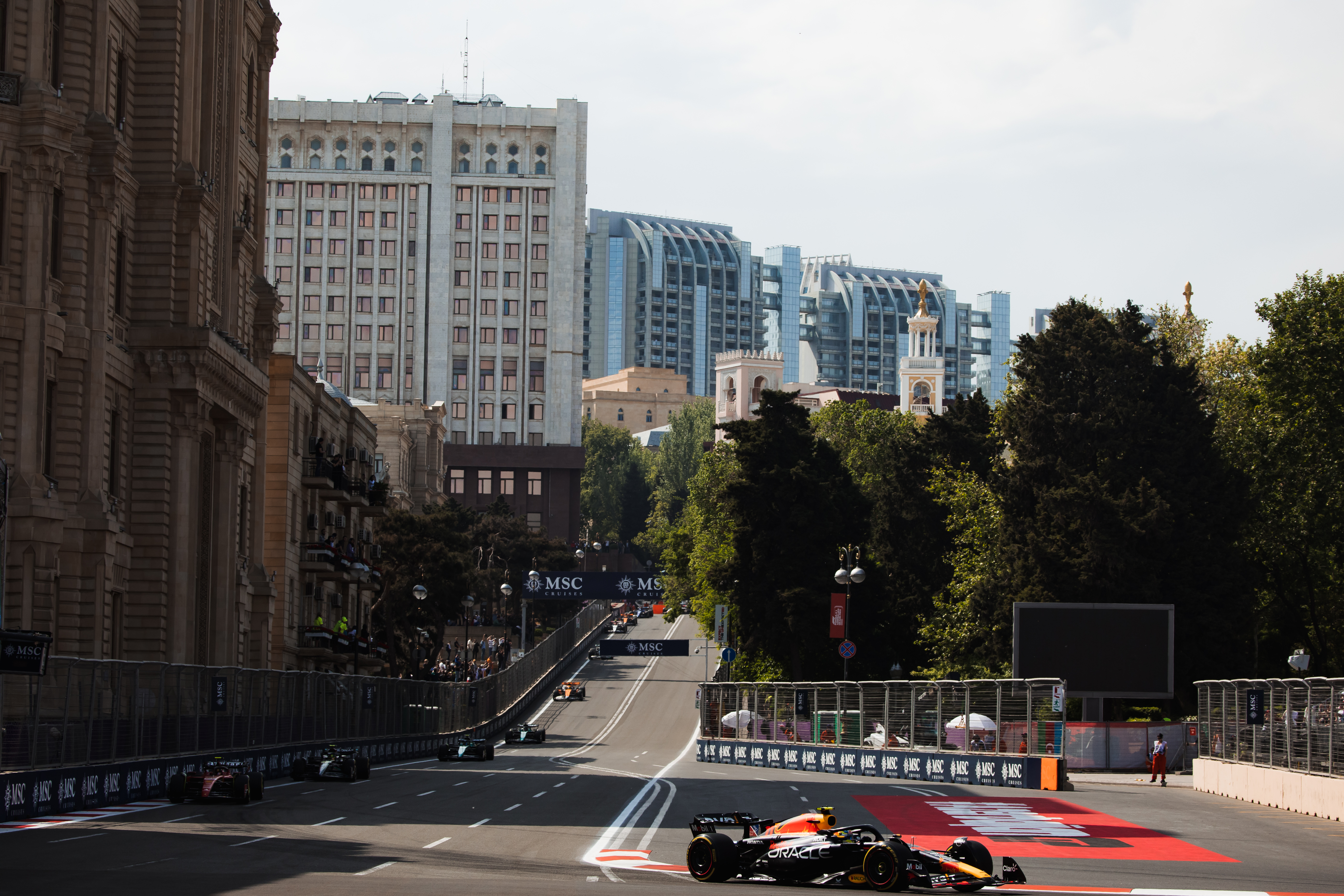
The theory: Red Bull’s performance advantage is such that it can overtake everyone else easily. The other teams are now so closely matched that there’s not enough performance variation between them for them to overtake each other.
Driver’s view – Fernando Alonso: “This is Formula 1 so it has always been like this [single-team domination]. It had been years of [Lewis] Hamilton and [Valtteri] Bottas first and second. In the past, [Sebastian] Vettel and [Mark] Webber.
“If you have the fastest car, you can start a little bit behind and you’re maybe still making some moves and overtaking and if you are in any other car, we are all within one tenth or whatever, so wherever you qualify you’re still more or less secure in that position and there are not many overtaking moves after lap two or lap three.
“If you remove the Red Bulls sometimes within six tenths you go from P3 to P16 in Q1. Then eventually you finish qualifying in the order that you deserve.
“And then in the race, how would you overtake if you are just half a tenth quicker? It’s more or less your natural order. I think that’s the main reason.”
The Race says: This is, fundamentally, the most significant reason for criticism. It’s not the fault of the regulations that Red Bull is in a different league on race pace, it’s the fault of Ferrari and Mercedes, which both have the resources and the foundations to be just as quick. Aston Martin is omitted from that list given, fast as its car is, it’s still a team that’s playing catch up in terms of its overall potential – and doing so fast.
Were Red Bull not to be on the grid, it’s likely this season would be considered a thrilling see-saw battle between the Ferraris, Mercedes and Aston Martin drivers. That’s a reminder of how careful we need to be in rushing to judgement and blaming the rules alone.
Alonso’s point about the chasing pack being too close to make overtaking possible is valid given it’s performance differentials and variables across a race that lead to overtaking and back and forth racing.
However, one of the aims of the regs is rightly to ensure the field is not too widely spread, which is logical because of you have clear performance gaps between cars and start them all in pace order, that’s also an ingredient for processions. This is something that interacts with complaints about lack of tyre deg, as this is something that can create pace offsets between cars of fundamentally similar pace.
DRS ZONES ARE BEING SHORTENED
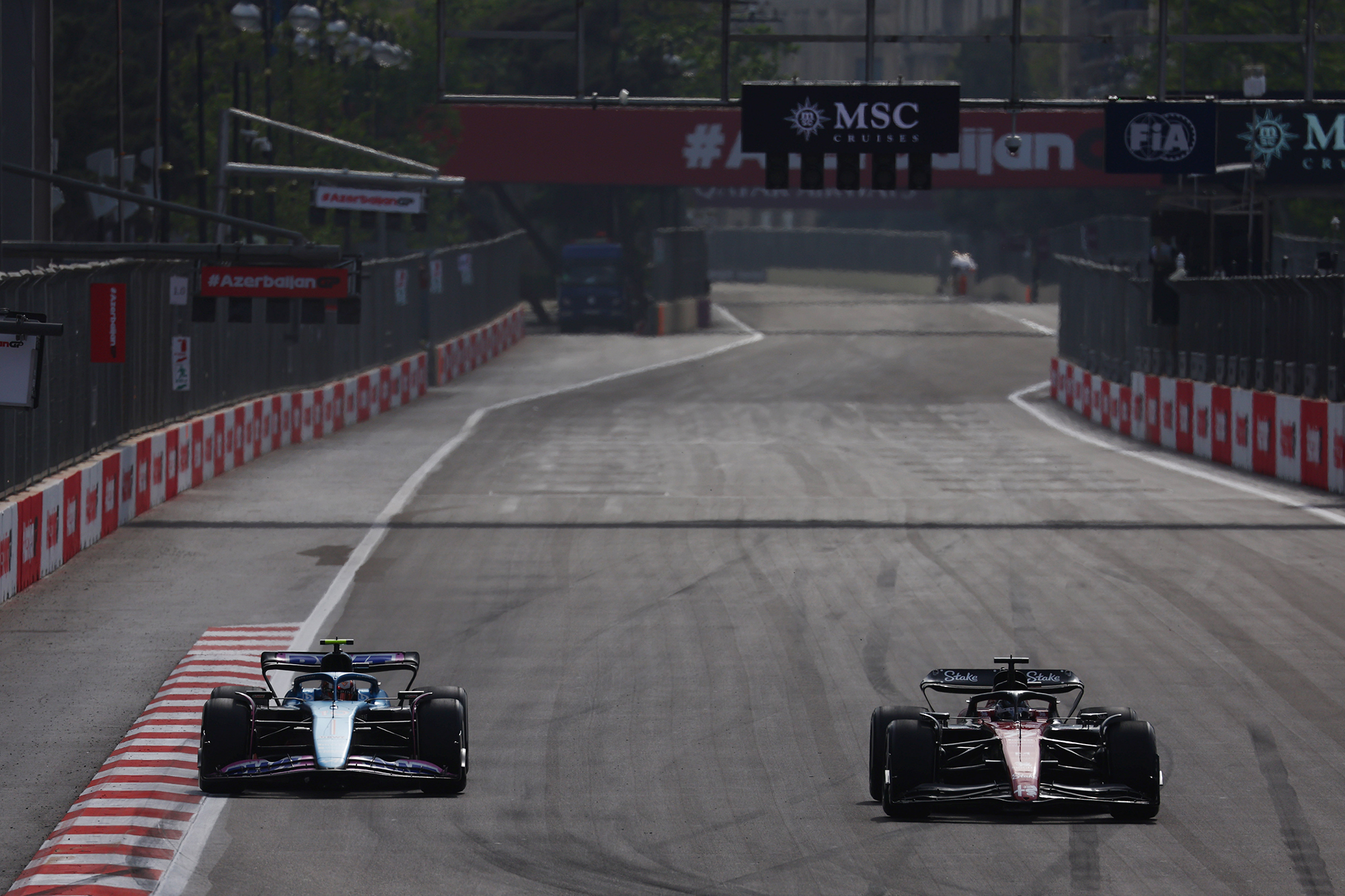
The theory: In both Baku and Miami, DRS zones are being shortened in length for 2023. Drivers are convinced that was a major factor in the flatness of the Azerbaijan GP. While few are outright fans of DRS and its easy passes as a concept, if it’s going to exist they want it to be useable and they feel that the shortened zones aren’t sufficient now turbulent air is more problematic again.
Driver’s view – Pierre Gasly: “This year it is generally more difficult to follow. The cars are going faster, there’s more aero development going on, always pushing it further and further and the more you push it the more difficult it becomes to follow.
“That side’s probably reducing so reducing DRS won’t help it. We’re in favour of
keeping the DRS from last year, clearly not reducing it.”
The Race says: The DRS zones are infinitely tuneable. The answer to the criticism here would be the FIA being more dynamic in how it adjusts the zones not just to ensure overtaking is possible, but also that it’s not too easy.
The trouble is, different cars have different potency of DRS effects, so it’s adjusting the zones will always benefit or hurt someone.
Ideally, the DRS zones, introduced in 2011, would be redundant now. But they remain a fact of life in F1 for now and the immediate future.
LESS NIMBLE CARS MAKE CREATIVE OVERTAKING HARDER

The theory: As cars getting heavier and set-ups get stiffer to maximise the ground-effect downforce, the scope for using kerbs aggressively when taking alternative lines to set up passing moves is decreasing.
Driver’s view – Max Verstappen: “Because of the stiffness of the cars, how you have to run them, it takes a little bit of that magic away on especially on a street circuit where you can ride a kerb here and there so that probably is a bit tough around Baku, but also around Singapore that makes it very hard.
“It’s just the weight increase. When you jump back in an old car and you go out, you definitely feel the difference in how agile an old car was, but that’s like early 2010 and before that they were even lighter. So I don’t know how we can solve that. Also the bigger wheels are quite a bit heavier as well.
“That, for me, goes in the wrong direction, but I don’t know what we can do about turning it around.”
The Race says: It’s a concerning trend that F1 cars have become so much larger and heavier over the past decade. There are reasons for it, such as the ever-improving safety systems and the hybrid power units, but it has made the cars lazier.
What’s more, the drivers are right to point out that current ground effect cars don’t ride kerbs as well and therefore allow less innovative use of lines and restrict the forms of attack.
The FIA has plans to tackle this. One of the stated aims of the 2026 rules overhaul is to make cars lighter and smaller – or at the very least contain the growth. But it won’t be transformative. The FIA has identified around 35kg as the weight-saving opportunity once essential mass is accounted for, so while shaving some of that off will be an improvement it’s hard to see F1 ever returning to the lightweight cars of the first decade of the 21st century.



